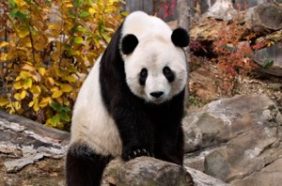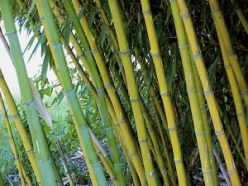An energy lesson from panda poop
Scientists say microbes in panda feces may help convert grasses into fuel
When most people think of giant pandas, they picture cute, black-and-white bears from China that eat bamboo. Scientists from Mississippi State University, however, are interested in what the bears leave behind: their poop.

Plants are a renewable energy source, which means we can “renew” them by growing more to replace the ones we use. When plants are used as an energy source, they’re called biomass.
Most energy we use comes from nonrenewable sources called fossil fuels. Fossil fuels include coal, oil and natural gas. They come from fossils — the remains of organisms that lived a long time ago. They’re nonrenewable because once they’re gone, there’s no way to make more.
Burning biomass is one way to capture its energy, but scientists want to find other ways. Brown hopes panda poop can teach scientists something about breaking down biomass. Pandas — or at least the microbes in their stomachs — are very good at getting energy out of bamboo. Unlike cows, which use four stomach chambers to digest large amounts of grass, pandas have only one chamber. Bamboo comes in, and poop goes out.
That means “anything residing there [in the stomach] to break down woody material has to be very efficient,” Candace Williams told Science News. Williams, a graduate student, worked with Brown on the project.

“We’re taking refuse — panda poop and the microbes that live there — and trying to break down another form of refuse,” Brown told Science News. Refuse is another word for waste. Brown says she wants to use one kind of waste — poop — to break down another kind: biomass.
Now the scientists are taking the next step and figuring out how the microbes work. Brown’s team is hoping to identify the chemicals that help with the process of breaking down biomass. If those chemicals can be made in the laboratory, they could be used to convert biomass — like grass or other plants — into fuel.
Brown says she doesn’t mind handling panda poop. It’s “probably the most pleasant fecal material to work with,” she told Science News. “Candace and I have worked with other poo, and we can assure you it has a fairly pleasant smell associated with it.”







